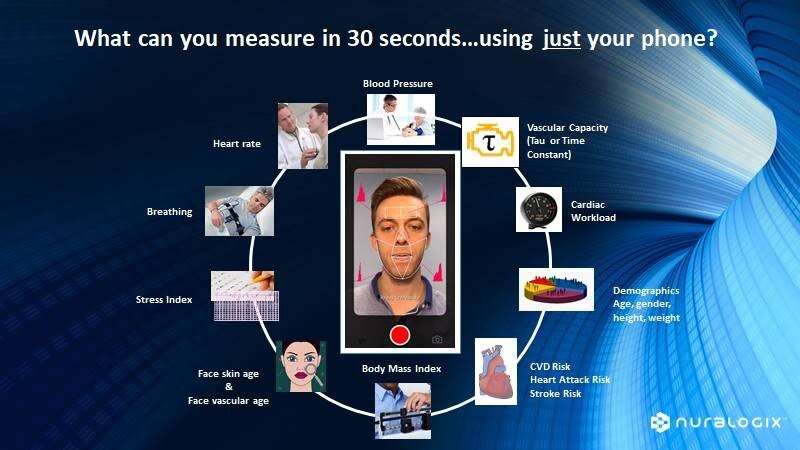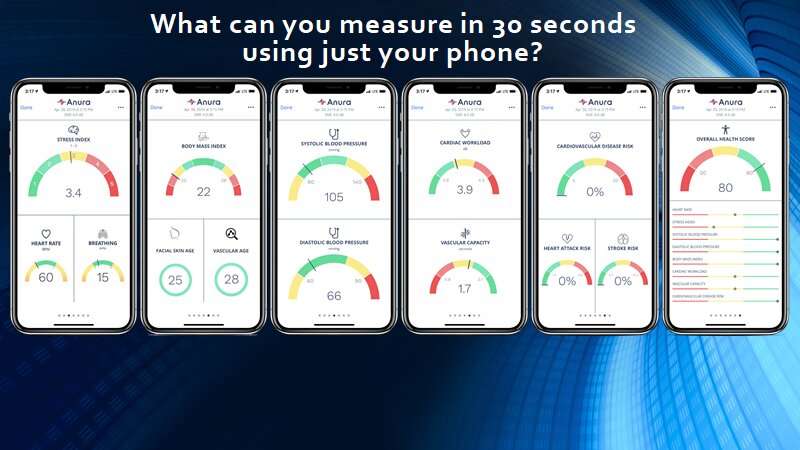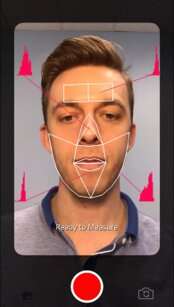Blood pressure monitoring may one day be easy as taking a video selfie

Blood pressure monitoring might one day become as easy as taking a video selfie, according to new research in Circulation: Cardiovascular Imaging, an American Heart Association journal.
Transdermal optical imaging measures blood pressure by detecting blood flow changes in smartphone-captured facial videos. Ambient light penetrates the skin's outer layer allowing digital optical sensors in smartphones to visualize and extract blood flow patterns, which transdermal optical imaging models can use to predict blood pressure.
Finding an accessible, easy way to monitor blood pressure is important given that nearly half of American adults have high blood pressure and many don't even know they have it, according to the American Heart Association.
"High blood pressure is a major contributor to cardiovascular disease—a leading cause of death and disability. To manage and prevent it, regular monitoring of one's blood pressure is essential," said study lead author Kang Lee, Ph.D., professor and research chair in developmental neuroscience at the University of Toronto in Canada. "Cuff-based blood pressure measuring devices, while highly accurate, are inconvenient and uncomfortable. Users tend not to follow American Heart Association guidelines and device manufacturers' suggestion to take multiple measurements each time."

Lee and his colleagues measured the blood flow of 1,328 Canadian and Chinese adults by capturing two-minute videos using an iPhone equipped with transdermal optical imaging software.
The researchers compared systolic, diastolic and pulse pressure measurements captured from smartphone videos to blood pressure readings using a traditional cuff-based continuous blood pressure measurement device.
The researchers used the data they gathered to teach the technology how to accurately determine blood pressure and pulse from facial blood flow patterns. They found that on average, transdermal optical imaging predicted systolic blood pressure with nearly 95% accuracy and diastolic blood pressure with pulse pressure at nearly 96% accuracy.
The technology's high accuracy is within international standards for devices used to measure blood pressure, according to Lee.

Researchers videoed faces in a well-controlled environment with fixed lighting, so it's unclear whether the technology can accurately measure blood pressure in less controlled environments, including homes. Also, while the study's participants had a variety of skin tones, the sample lacked subjects with either extremely dark or fair skin tones. Lee and colleagues are also looking into reducing the needed video length from 2 minutes to 30 seconds, in order to make the technology more user-friendly.
People in the study all had normal blood pressure. "If future studies confirm our results and show this method can be used to measure blood pressures that are clinically high or low, we will have the option of a contactless and non-invasive method to monitor blood pressures conveniently—perhaps anytime and anywhere—for health management purposes," Lee said.
"This study shows that facial video can contain some information about systolic blood pressure," said Ramakrishna Mukkamala, Ph.D., Circulation Imaging editorial author and professor in the Department of Electrical and Computer Engineering at Michigan State University in East Lansing. "If future studies could confirm this exciting result in hypertensive patients and with video camera measurements made during daily life, then obtaining blood pressure information with a click of a camera may become reality."
More information: Circulation: Cardiovascular Imaging (2019). DOI: 10.1161/CIRCIMAGING.119.008857



















